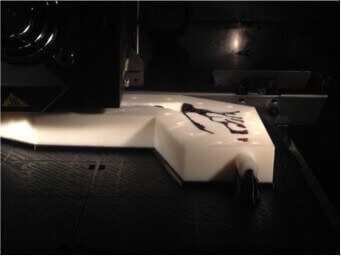Believe it or not: 3D printing has helped to show why humans really enjoy good food!
Our ability to distinguish different food flavors depends on “retronasal smell”: Food volatiles stimulate our olfactory receptor neurons. What was not known until recently, was whether these food volatiles are carried toward the nasal cavity or flow into the lungs. In the past, physiologists have looked at the nasal passages but not at the pathway from the back of the mouth to the nose. 3D printing has helped to change this!
A team of engineers used a 3D printed model of the nasal passage, from nostril to trachea, to show that tasting food relies on food volatiles moving from the back of the mouth to the nasal cavity.
“During quiet breathing, there is no valve that can control the direction of volatile transport,” said Rui Ni, assistant professor of mechanical engineering, Penn State. “However, something must be controlling the movement of these particles and keeping them out of the lungs.”
What did the 3D printed model show?

Using data from CT scans and with the help of two radiologists, Ni and his team built a schematic of the human airway from the nostrils to the trachea, including the fine structure. This schematic was used to create a 3D model on a 3D printer. The photo shows the printing in action!
This 3D printed model reveals that it is the shape of the airway that helps transfer the volatiles to the nasal cavity. The researchers found that chewed food particles end up in the back of the mouth in a sort of side cavity to the main airflow. When air is inhaled through the nose, the air flow forms an air curtain to prevent volatile particles released from the back of the mouth from escaping into the lungs. However, when air is exhaled, it sweeps into the area with abundant food volatiles moving them into the nasal cavity where they are sensed by olfactory cells.
“Smooth, relatively slow breathing maximizes delivery of the particles to the nose,” said Ni. “Food smells and tastes better if you take your time.”
If you are interested in more details: Rui Ni’s paper “Optimal directional volatile transport in retronasal olfaction” was published in the Proceedings of the National Academy of Sciences earlier this month.
Image source: Penn State News and Pixabay
License: The text of "Why Your Food Smells So Good – 3D Printing Has The Answer" by All3DP is licensed under a Creative Commons Attribution 4.0 International License.